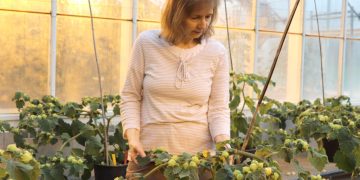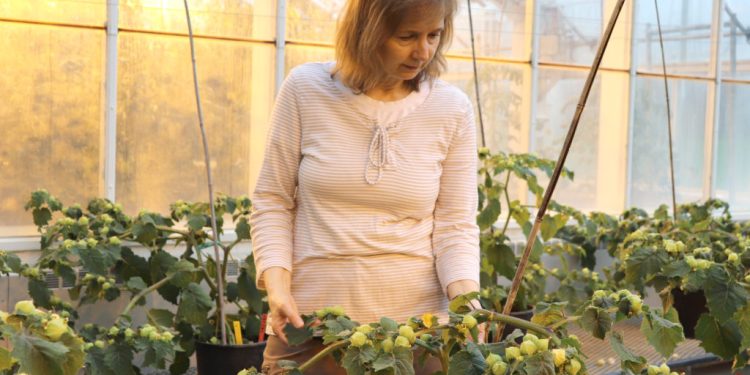Talking to researchers and companies about their genetically-engineered projects for specialty crops is a little bit like a trip to a grower’s dream world.
Imagine ground cherries that stay on the plant until harvest, potatoes that are more nutritious and disease-resistant, apples that genetically dodge browning after slicing, industrial hemp varieties fine-tuned for growers and microbes that help protect crops from diseases and pests.
These projects are in various stages of completion – and their place in the market in some cases hasn’t yet been determined. Public attitudes – and those of growers – on genetically modified organisms (GMOs) and organisms engineered with next-generation technologies are not yet universally accepted.
Genetically-engineered specialty crops will find a niche of some kind in future markets. Researchers and industry leaders say it’s up to growers and consumers to decide how they’re used.
Above: Joyce Van Eck of the Boyce Thompson Institute is researching ways to make ground cherries and goldenberries easier to grow commercially. Photo: Mike Carroll/Boyce Thompson Institute
Grower confidence
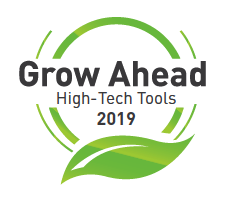
The amount of confidence growers put in genome editing varies widely. Joyce Van Eck of the Boyce Thompson Institute at Cornell University is overjoyed to have a few organic growers open to accepting disease-resistant plants from her genetics research, which includes CRISPR-edited potatoes, goldenberries and ground cherries.
“It’s their choice,” she said.
On the other hand, Neal Carter of Okanagan Specialty Fruits – which has developed apples genetically engineered not to enzymatically brown after being cut or bruised – said that the apple industry itself could stand some education about the safety and benefits of genome-editing.
Consumer issues have been significant, especially with concerns over genetically-edited foods.
A 2016 report from the National Academies of Sciences, Engineering and Medicine suggested a “scientific consensus” that genetically modified foods were safe, but a Pew Research Center survey the same year found “a majority of Americans perceive disagreement in the scientific community over whether or not GM foods are safe to eat.” A minority thought scientists had a strong understanding of the health risks and benefits of genetically modified foods.
Clare Murray is chief business officer of LifeEdit, a research subsidiary of AgBiome that is developing gene editing tools to produce specialty crops with value-added traits – a specific area of interest is the U.S. fresh tomato market. An “early discovery” company, it will likely need partners to help with marketing and development of the basic science, Murray said. Educating consumers for a more favorable market is a big question, she said.
“It is absolutely the billion-dollar question,” Murray said. “We’d all like to be able to know how to do that and I don’t think AgBiome has the answer to that.”
State of regulation

U.S. Secretary of Agriculture Sonny Perdue did his part to boost genetics work in a Feb. 21 presentation at the USDA’s Agricultural Outlook Forum.
Perdue highlighted modified golden rice (genetically modified to curb Vitamin A deficiency) as an innovation that could help nourish the world’s growing population.
“You know, our agricultural research and education Extension infrastructure here in the United States, I believe it’s revered and emulated around the world,” he said. “I think it’s contributed to the development of tools, including biotech and other progressive types of technologies dealing with a better, more efficient production of food and fuel and fiber around the world.”
Not all governments are as welcoming to genetics.
The Court Justice of the European Union last year ruled that organisms developed with modern genome editing techniques were still essentially genetically modified organisms and thus subject to the union’s strict rules created to regulate first-generation GMOs.
Randy Shultz, a former Monsanto genome editing platform team leader, who was recently hired as head of Arcadia Biosciences Research and Development, said that not all cultures have to be equally accepting of the technology. In addition to gene editing capabilities, Arcadia has an advanced proprietary, advanced breeding platform, TILLING, that doesn’t edit genes. Food-chain traceability could segregate non-genome-edited foods and calm fears of “cross-contamination,” he said.
“We really just need to focus on innovating the whole system, being able to go from seed to fork – if you can track that whole pipeline or whole delivery system, the issues can go away,” he said. “The Europeans can have less technology, less improved, if they want, and other places can leverage technology much more effectively.”
Murray, a native of England with a doctorate degree in chemistry, said regulation should consider science.
“I think what we need more than anything is regulatory support based on science,” she said. “It’s really about designing your regulatory framework from data and science”
Van Eck noted that in Canada, the regulatory process for biosciences seems more straightforward: It’s about the finished products – the plants themselves – rather than the process for obtaining it, that is evaluated. In the U.S., the gene editing process is considered, but “knocking out” or silencing an existing gene gets less scrutiny than inserting a new gene, she said.
“These are tools,” she said. “We have so many tools that we can use in combination with plant breeding. I sometimes worry that people get enamored of technology. But it really is just a tool. Do you always need gene editing or CRISPR? No, you don’t. But there are instances for it to be helpful. So, I think the regulation needs to take that into consideration as well.”
Efficient research
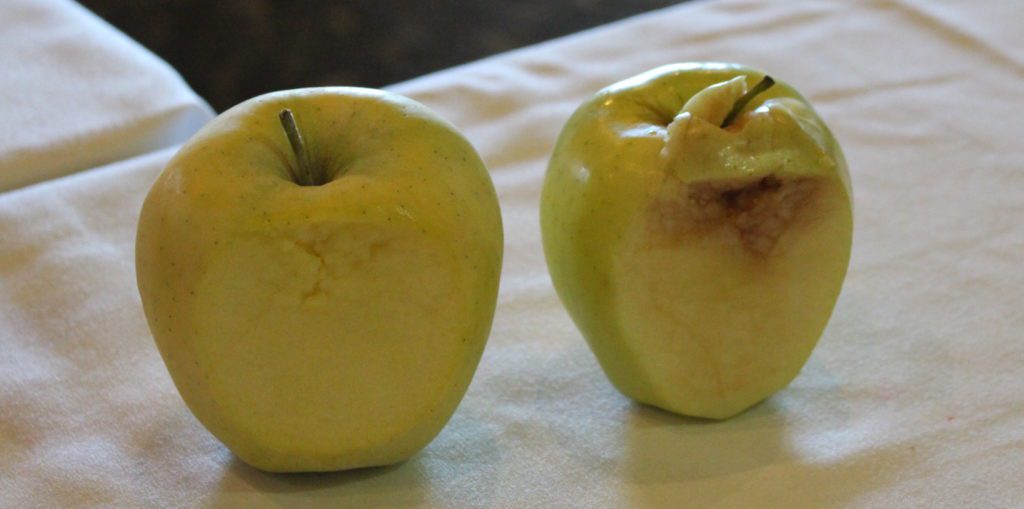
Carter has now navigated the U.S. regulatory process for three engineered apples: Arctic Grannys, Arctic Goldens and Arctic Fujis. The company is now hip-deep in production and distribution. Carter said in late April it had vendor packages executed with four distributors. The company is building a 25,000-square-foot expansion onto its existing 3,000-4,000-square-foot facility for apple sizing and slicing while holding onto plans for a facility five times that size in Washington state’s Royal City.
But Carter said that future research is also exciting. Future genetics research could be more accurate and thus much more efficient, producing research plants with higher on-target responses, he said.
Van Eck sees a consistent improvement to CRISPR techniques: “It keeps on getting better and expanding.”
Murray points to the bottom line: more research at a reduced cost.
“The kind of bigger picture here is the more we can do to facilitate our ability to get more crops, better crops, better yields from the acreage we have available for farming – however we do that is going to be a great positive for the world as it were,” she said. “And gene editing is a tool in that toolbox.”
– Stephen Kloosterman, associate editor
In their own words
Joyce Van Eck of the Boyce Thompson Institute at Cornell University
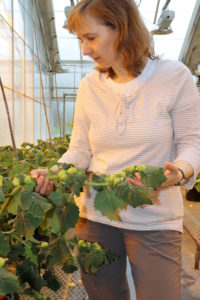
Work in specialty crops genetics: Van Eck has been interested in crop improvement since she was an undergraduate student, and has been working with tomatoes for two decades. Her lab has worked mostly on potatoes and tomatoes. Currently, her work involves domesticating ground cherries and goldenberries via CRISPR to shorten their seasons and keep them on the vine long enough for a clean harvest.
On the future of genetics in specialty crops: “There are some genes in plants, they’re called susceptibility genes that make them more susceptible to diseases, and if you can use a gene editing approach to knock out that susceptibility gene and make a plant more resistant, I think that organic growers might be interested in using something like that, knowing that disease is a big problem in organic production. We have a couple of organic farmers who are very interested in trying gene editing material that we have, which just makes me so happy – very thrilled to hear that – that there seems to be an open-mindedness about it.”
Arcadia Biosciences Research and Development Head Randy Shultz

Work in specialty crops genetics: Based in Davis, California, Arcadia Biosciences develops agricultural products for farmers. Products in their development pipeline include salinity tolerance for crops including vegetables, water use efficiency for tree crops, and a dedicated business unit focus on standardizing and improving hemp varieties.
On the future of genetics in specialty crops: “Consumers are more likely to accept new technology when they see a direct benefit in it. Cell phones, for example: I was a kid when cell phones first came out. There were actually a lot of people that were not going to use them because of the potential for brain cancer from the antenna, right? And that was part of society’s conversation. But imagine where we would be if we said we’re going to ban cell phones because of this potential risk that never really panned out. What kind of stopped that was, people like cell phones, and they like using them, and they like making their own decision about whether the risk is worth the reward. And you never really saw that in the whole GMO thing. It was all about farmer convenience and not necessarily about the consumer. I think it’s really important that the technology be used to deliver benefits directly to the consumer.”
AgBiome Chief Business Officer Clare Murray

Work in specialty crops genetics: LifeEdit is a subsidiary of AgBiome that was formed in 2017. Located in North Carolina’s Research Triangle, the company is developing a number of genetic tools for genome editing of specialty crops.
On the future of genetics in specialty crops: “I think one of the really cool things about gene editing is, it’s going to have a much faster development time than for instance, your regular GMO. It’s going to be less expensive to get them there, and as a consequence, your crops are not necessarily going to have to carry the same cost of development as a GMO crop.”
Okanagan Specialty Fruits (OSF) President Neal Carter
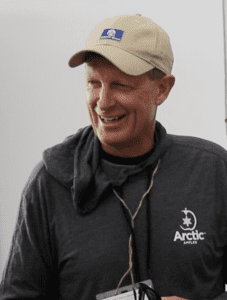
Work in specialty crops genetics: Carter, a Canadian, founded OSF in 1996. The group has developed a trio of non-browning apples: Arctic Goldens, Arctic Grannys and Arctic Fujis – the latter of which is set for USDA approval in 2019.
On the future of genetics in specialty crops: “I think part of our educational outreach includes the industry itself. We hadn’t thought we would have to be educating the industry that much, but it turns out we are. It’s surprising how often senior members of the apple industry itself don’t seem to understand pollen gene flow and bee pollination.”
